Losing a beloved owner is one of the most heartbreaking experiences a dog can endure. Just like humans, dogs experience grief and loss, and they have their own unique ways of showing it. Understanding how dogs grieve can help us provide the support they need during these difficult times. Here, we’ll explore 15 ways dogs show grief when their owner dies, shedding light on their emotional journey and how we can be there for them.
1. Sudden Changes In Appetite

One of the first signs that a dog is grieving the loss of their owner is a noticeable change in their eating habits. Dogs may refuse to eat their favorite meals, or they may develop a decreased appetite as they mourn. This can be distressing for pet owners who want their furry friends to stay healthy. According to a study published by the American Society for the Prevention of Cruelty to Animals (ASPCA), it is not uncommon for dogs to experience changes in appetite when they are grieving a loss. It’s crucial to monitor their eating patterns and consult a veterinarian if the changes persist or worsen over time.
Grieving dogs may also experience weight loss due to their decreased interest in food. Pet owners can help by offering their dogs a variety of nutritious meals and treats to entice them back to eating. Ensuring a quiet and comforting eating environment can also encourage them to eat. Patience and understanding are key during this time, as forcing a dog to eat can add to their stress. Providing companionship during mealtime can also make a difference, reminding them that they are not alone in their grief. Sometimes, the presence of other pets or familiar scents can help stimulate their appetite, gradually bringing them back to a more regular eating routine.
2. Increased Lethargy and Sleep

Grieving dogs often exhibit increased lethargy, spending significantly more time sleeping or resting than usual. It’s as if the weight of their sadness makes them feel physically exhausted. This behavior is a natural response to emotional stress, similar to how humans may feel drained during times of grief. According to research published by Good RX, dogs can experience sleep disturbances similar to humans when dealing with loss. They may find solace in sleep, using it to escape the emotional turmoil.
As pet owners, we must be attentive to these changes and ensure that our dogs have comfortable resting areas where they feel safe. While it’s essential to allow them the time they need to process their emotions, encouraging gentle activities and play can help lift their spirits. Short walks or play sessions can provide mental stimulation and offer a slight distraction from their grief. However, it’s crucial to respect their pace and not push them too hard. Finding a balance between rest and activity can help them gradually return to their normal energy levels over time.
3. Seeking Comfort and Closeness
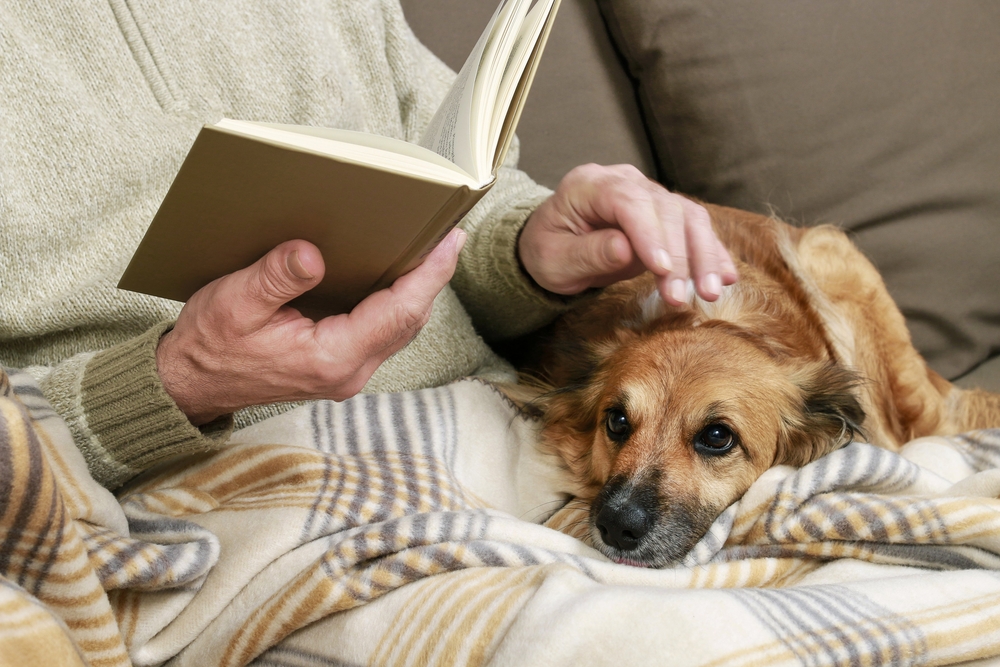
When dealing with the loss of an owner, many dogs become more clingy, seeking constant comfort and closeness from other family members or pets. This behavior stems from their desire for reassurance and security during a confusing and distressing time. According to experts at PetMD, dogs have an incredible ability to form strong bonds with humans, and the loss of an owner disrupts this bond, leading to an innate need for connection. As a result, grieving dogs may follow you around more than usual, always wanting to be by your side.
Providing reassurance through physical touch, like gentle petting or cuddling, can help soothe their anxious hearts. Sharing your bed or allowing them to rest on your lap can provide the warmth and security they are craving. It’s crucial to be patient and responsive to their needs, offering them the companionship and love they are seeking. Remember that their increased need for closeness is temporary and will gradually lessen as they heal. In the meantime, embracing their desire for comfort can strengthen your bond and support their emotional recovery.
4. Vocalizing More Often

Grieving dogs may express their sadness through increased vocalizations, such as whining, barking, or howling. It’s their way of communicating their distress and seeking comfort from those around them. This behavior can be particularly noticeable in dogs who were closely bonded with their owners. They may vocalize more frequently during times when they would usually interact with their owners, like mealtime or playtime. This change in behavior can be their attempt to call for their lost friend or express their loneliness.
As a pet owner, it’s essential to acknowledge these vocalizations and respond calmly to reassure your dog. Providing them with soothing words and gentle strokes can help alleviate their anxiety. It’s important not to scold them for this behavior, as it is a natural part of their grieving process. Instead, offer them extra attention and companionship to help them feel less alone. Over time, as they adjust to their new reality, these vocalizations will likely decrease, but the extra support during this time can make a significant difference.
5. Searching for Their Lost Owner
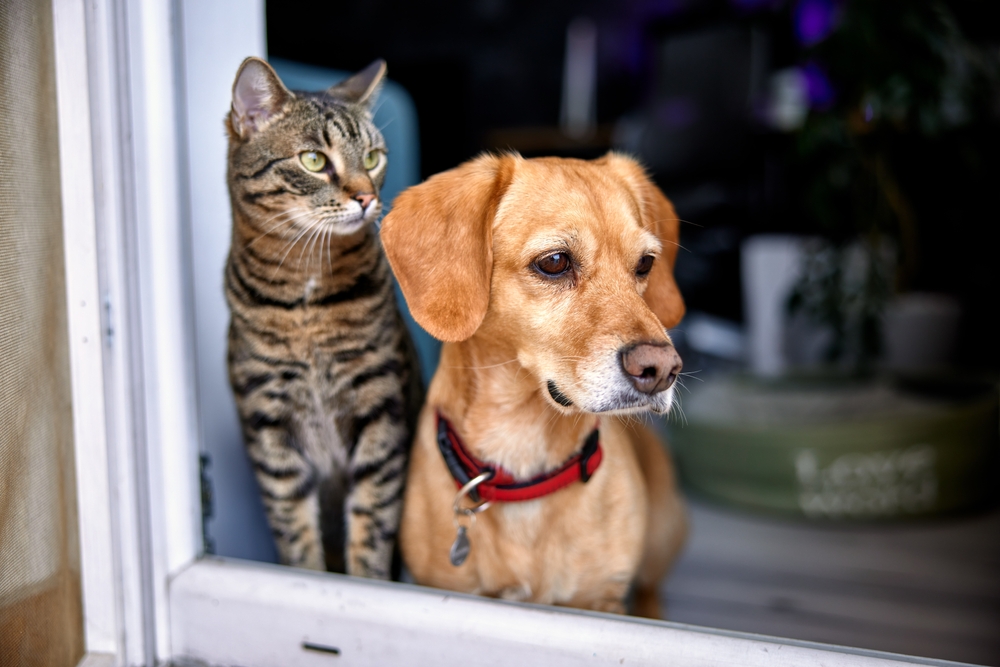
Some dogs exhibit behaviors that suggest they are searching for their lost owner in the home or the places they used to frequent together. This can include pacing around the house, sniffing areas where their owner used to sit, or even waiting by the door in anticipation of their return. Dogs have a strong sense of smell and memory, and they may be trying to locate their owner using their keen senses. This behavior can be heart-wrenching to witness, as it highlights the depth of their bond and the confusion they feel over the sudden absence.
Supporting a grieving dog through this process involves providing them with comfort and gradually helping them understand that their owner is no longer present. This can be done by maintaining a regular routine, which offers them a sense of stability and predictability. Additionally, introducing new activities or toys can help distract them from their search and provide mental enrichment. While it might take time, dogs eventually come to understand that their owner is not coming back, and with love and support, they can adapt to their new reality.
6. Changes in Grooming Habits
 Dogs may also exhibit changes in their grooming habits during times of grief, such as excessive licking or neglecting their usual grooming routines. This change can manifest as over-grooming, where a dog licks or chews on themselves more frequently, leading to potential skin irritations or hair loss. Over-grooming can be a self-soothing behavior, as dogs try to cope with the stress and anxiety of losing their owner. On the other hand, some dogs might groom less, showing a disinterest in their usual grooming behaviors as they grapple with their emotions.
Dogs may also exhibit changes in their grooming habits during times of grief, such as excessive licking or neglecting their usual grooming routines. This change can manifest as over-grooming, where a dog licks or chews on themselves more frequently, leading to potential skin irritations or hair loss. Over-grooming can be a self-soothing behavior, as dogs try to cope with the stress and anxiety of losing their owner. On the other hand, some dogs might groom less, showing a disinterest in their usual grooming behaviors as they grapple with their emotions.
It’s important for pet owners to monitor these changes and intervene when necessary. Providing alternative soothing activities, like interactive toys or gentle massages, can help redirect their focus. If over-grooming leads to skin issues or if a dog’s overall hygiene declines, consulting a veterinarian for advice and potential treatments is crucial. Encouraging regular grooming sessions and spending quality time with your dog can also help restore their normal grooming habits. With time, patience, and care, dogs can regain their interest in self-care as they heal from their emotional wounds.
7. Retreating to Favorite Spots
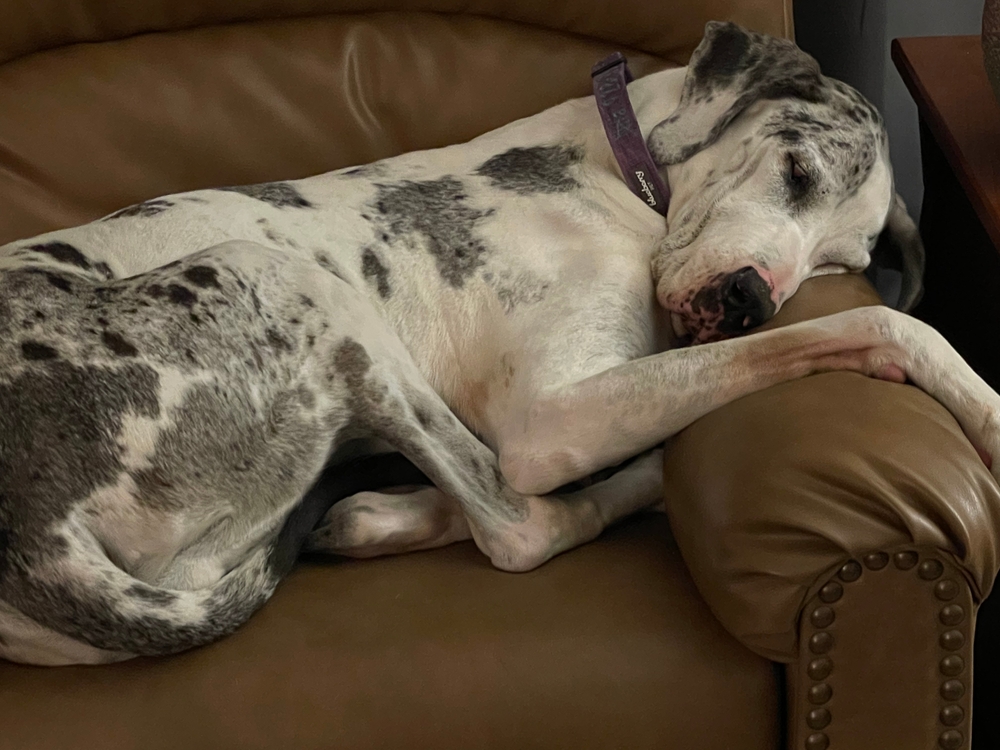
Some dogs may retreat to their favorite spots in the house or yard as they cope with the loss of their owner. These spots often hold comforting memories, making them feel close to their lost friend in some way. It’s not uncommon for dogs to curl up in their owner’s favorite chair or lay on a piece of clothing with their scent. The familiarity of these locations provides them with a sense of security and solace during a time of change and confusion.
As pet owners, we can respect their need for these comforting spaces by ensuring they are accessible and undisturbed. Allowing them the freedom to spend time in these places can aid in their grieving process. However, it’s also beneficial to encourage them to explore new areas or engage in activities outside their comfort zones gradually. By introducing positive experiences in different settings, we can help them adapt to their new circumstances while still honoring their need for familiar comforts. Over time, they may begin to associate new, positive memories with these spots, helping them heal and move forward.
8. Loss of Interest in Play
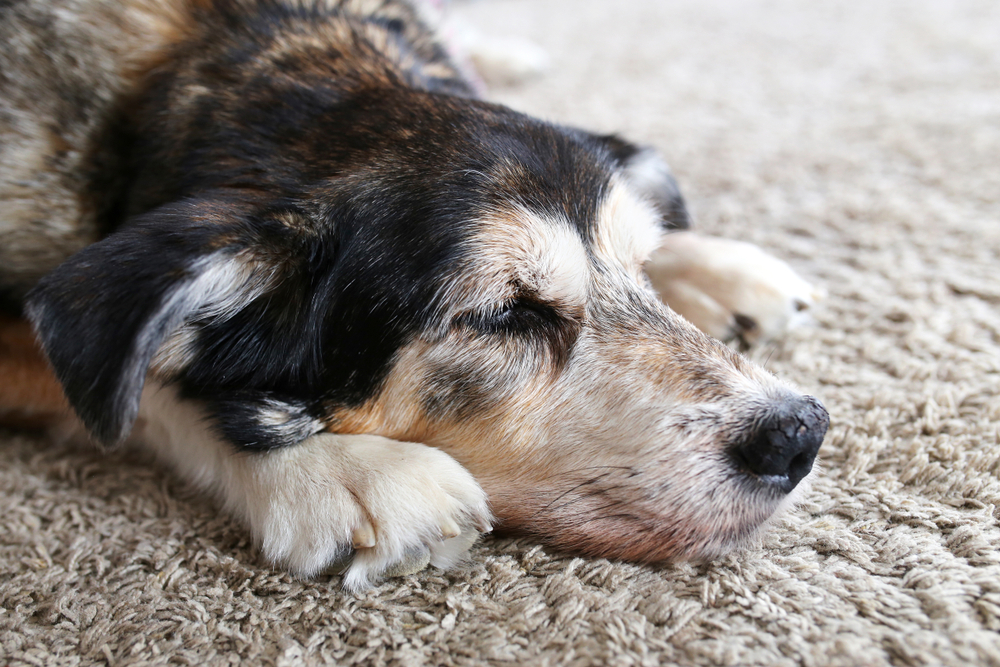
Grieving dogs might show a noticeable loss of interest in play and activities they once enjoyed. Toys that used to excite them may no longer hold their attention, and playtime could seem like a distant memory. This change can be concerning, as play is an essential aspect of a dog’s life, providing both physical exercise and mental stimulation. The absence of playfulness often reflects their emotional state, as they process the absence of their beloved owner.
To support dogs during this time, it’s helpful to introduce new toys or games that might reignite their interest. Sometimes, engaging in play with other dogs or new companions can help spark their curiosity. Encouraging short, gentle play sessions can gradually rebuild their interest and provide a positive outlet for their emotions. It’s important to be patient and understanding, allowing them to set their own pace as they adjust to their new reality. With time and support, dogs can rediscover the joy of play, helping them heal and adapt to their changed circumstances.
9. Showing Signs of Anxiety

Anxiety is a common response in dogs grieving the loss of their owner. They may become more sensitive to changes in their environment, displaying behaviors such as restlessness, pacing, or increased alertness. Some dogs might also become more fearful or easily startled by loud noises or unfamiliar situations. This heightened state of anxiety is a natural reaction to the uncertainty and loss they are experiencing.
Pet owners can help alleviate their dog’s anxiety by maintaining a consistent routine and creating a calm, predictable environment. Providing a safe space where they can retreat during overwhelming moments can also be beneficial. Additionally, engaging in calming activities, such as gentle walks or relaxation exercises, can help soothe their anxious minds. In some cases, consulting with a veterinarian or a professional animal behaviorist may be necessary to develop a tailored plan to address their anxiety. With patience and compassionate support, dogs can gradually overcome their anxiety and find peace in their new circumstances.
10. Behavioral Regression
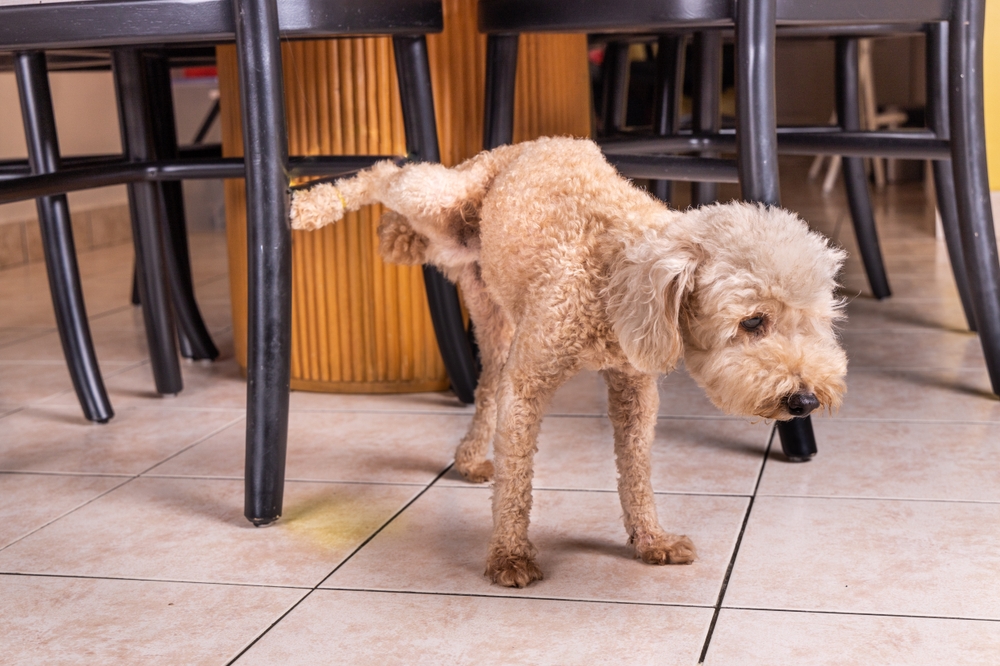
Grieving dogs might exhibit behavioral regression, displaying behaviors they had outgrown or been trained out of. This can include accidents in the house, chewing on furniture, or other destructive behaviors. Regression is often a sign of their emotional turmoil and a way of coping with the stress of loss. It’s their way of expressing their confusion and seeking comfort in familiar, albeit undesirable, behaviors.
Understanding the root of their regression is crucial in addressing these behaviors with empathy and patience. Reinforcing positive behaviors with rewards and praise can help redirect their actions. Establishing a structured routine can provide them with a sense of stability, helping them regain control over their environment. Professional guidance from a trainer or behaviorist can also offer valuable insights and strategies to manage regression effectively. With consistent support and understanding, dogs can overcome regression and adjust to their new reality.
11. Reacting to Owner’s Belongings

Dogs may show particular interest in their owner’s belongings after their passing, displaying behaviors such as sniffing, lying on, or guarding these items. The scent of their owner can offer comfort and a sense of connection, even in their absence. It’s not unusual for dogs to carry around or sleep with items like clothing, shoes, or blankets that hold their owner’s scent. This behavior highlights their strong bond and the comfort they find in familiar smells.
Allowing dogs access to these items can be a source of solace during the grieving process. However, it’s essential to balance this with encouraging them to engage with new, positive experiences. Gradually integrating new toys or bedding can help them expand their comfort zone while still honoring their attachment to their owner’s belongings. As time passes, dogs may naturally show less interest in these items as they adjust to their new circumstances. Providing ongoing support and understanding will help them navigate their grief and find comfort in new memories.
12. Responding to Owner’s Voice or Name

Even in their owner’s absence, some dogs may respond to the sound of their voice or name, whether through recordings or the mention of their name in conversation. This reaction can be both heartwarming and heartbreaking, as it underscores the deep connection they shared. Dogs might perk up, display excitement, or search for their owner upon hearing their voice. This behavior demonstrates the lasting impact their owner had on their lives and the strong bond they formed.
While it can be tempting to frequently play recordings of their owner’s voice, it’s important to consider the emotional impact it may have on the dog. Balancing these moments with new, positive interactions can help them process their grief and adjust to their new reality. Encouraging the use of familiar commands or words in a comforting tone can also provide reassurance. Over time, dogs may start to associate these words with new experiences, helping them move forward while still cherishing their memories. Supporting them through this transition with love and understanding is key to their emotional healing.
13. Developing New Fears
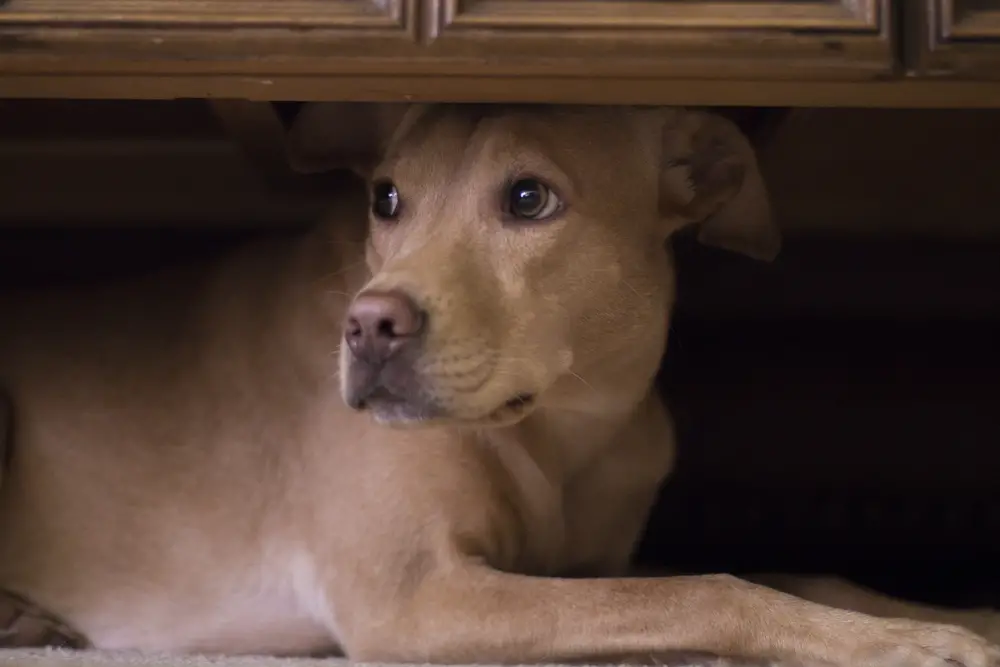
Grieving dogs may develop new fears or phobias that they hadn’t exhibited before. This might include an aversion to certain areas of the house, fear of being left alone, or anxiety in social situations. These new fears can stem from the uncertainty and changes they are experiencing after losing their owner. It’s their way of expressing their vulnerability and seeking protection in an unfamiliar world.
Addressing these fears requires patience and a gentle approach. Gradually exposing dogs to their new fears in a controlled and positive manner can help them build confidence. Positive reinforcement and rewards for brave behavior can encourage them to overcome their anxieties. Sometimes, professional guidance from a behaviorist can provide valuable insights and strategies to address these fears effectively. With time, understanding, and support, dogs can learn to navigate their new environment and regain their sense of security.
14. Avoiding Social Interactions
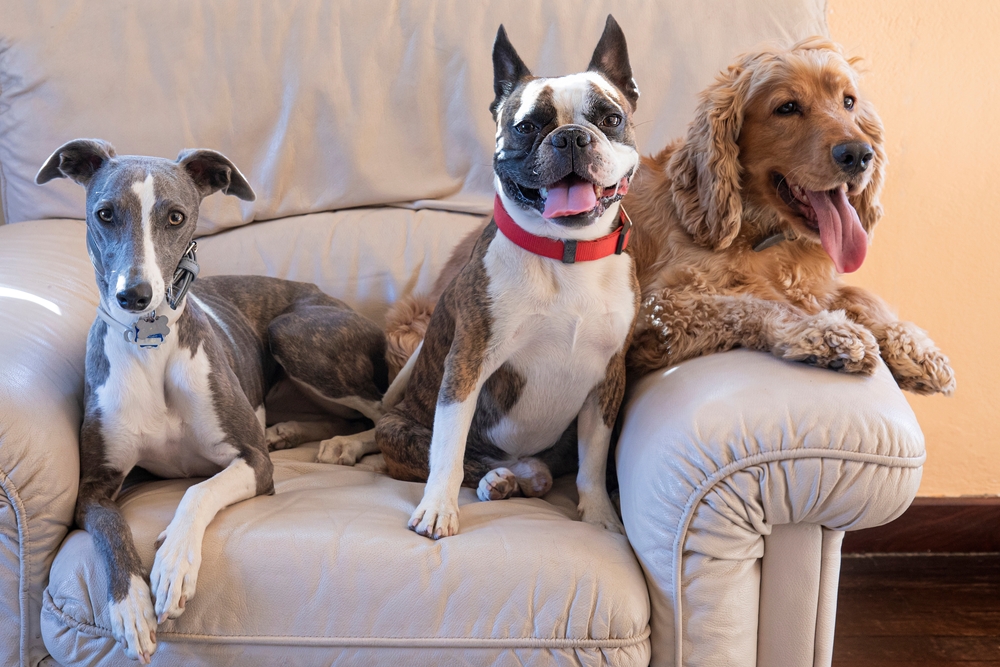
Some dogs may withdraw from social interactions with other animals or people during their grieving process. This withdrawal can be a protective mechanism, as they try to process their emotions in solitude. They might show disinterest in meeting new people or playing with other dogs, preferring to spend time alone. This behavior highlights their need for space and time to adjust to their new reality.
Respecting a dog’s need for solitude is essential, while also gently encouraging social interactions at their own pace. Slowly reintroducing them to social activities and environments can help them regain confidence and interest in interacting with others. Providing positive experiences and rewards during these interactions can make them more appealing. It’s important to allow them to dictate the pace and not force socialization, as this can create additional stress. With support and encouragement, dogs can gradually re-engage with the world around them, finding comfort in new social connections.
15. Exhibiting Guarding Behavior
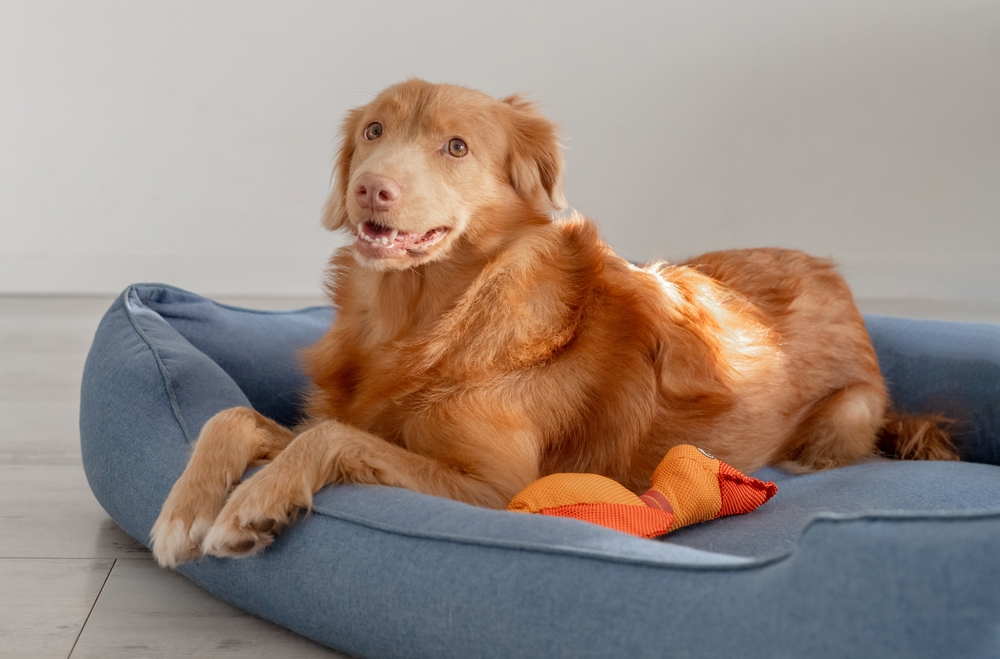
In response to the loss of their owner, some dogs may display increased guarding behavior, becoming more protective of their home or remaining family members. This behavior stems from their instinct to protect their pack and establish a sense of control in an uncertain world. Dogs may become more alert, barking at unfamiliar sounds or visitors, as they try to fulfill their perceived role as protector. This heightened vigilance can be a way for them to cope with the changes and feel more secure.
To address this behavior, providing reassurance and establishing clear boundaries is essential. Reinforcing positive behaviors with rewards and commands can help them understand appropriate responses. It’s important to remain calm and patient, avoiding punishment for their protective instincts. Offering them a safe space where they can retreat during overwhelming moments can also help alleviate their guarding tendencies. With time and consistent support, dogs can learn to balance their protective instincts with a sense of security, adapting to their new circumstances while feeling confident and loved.
